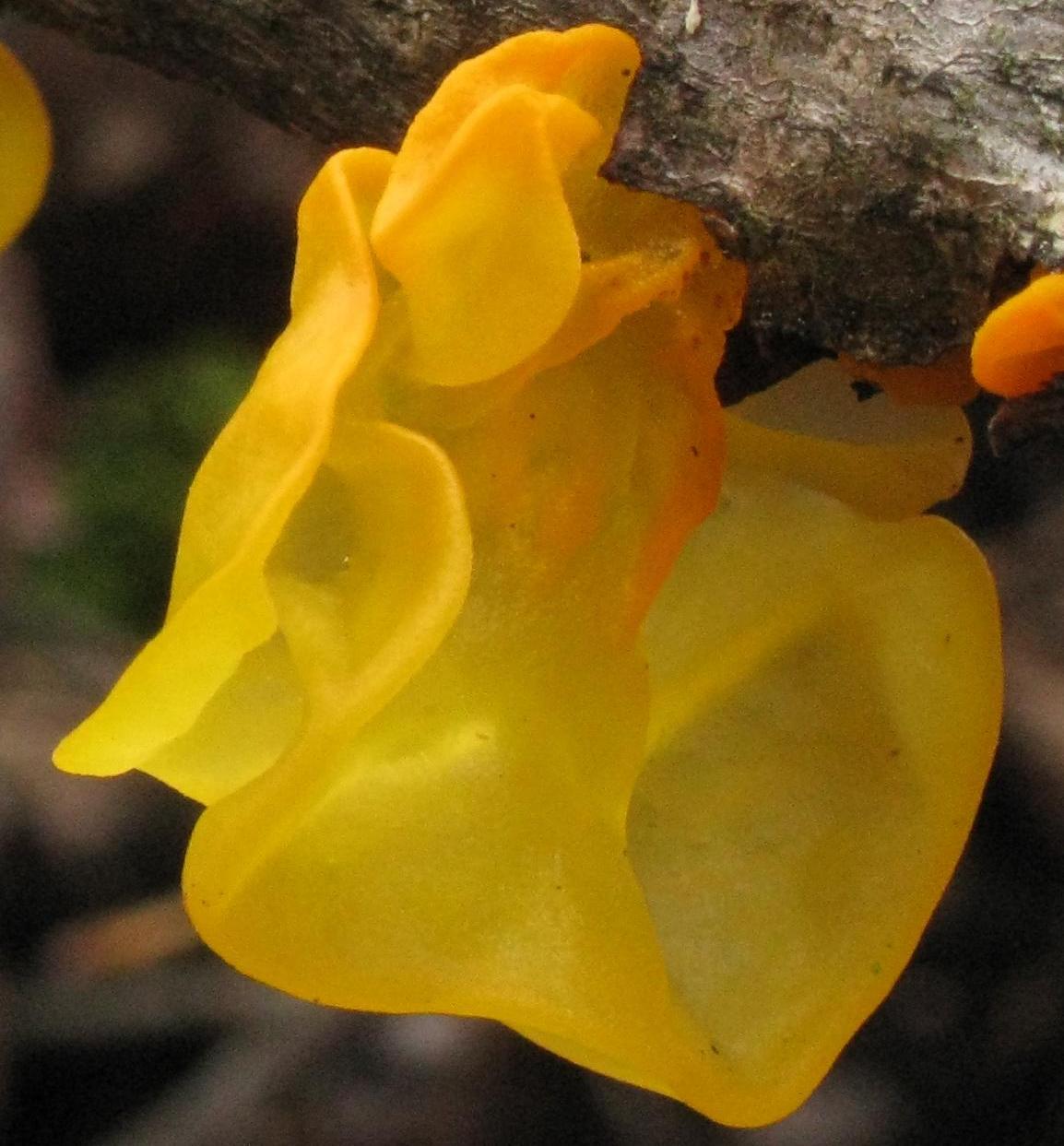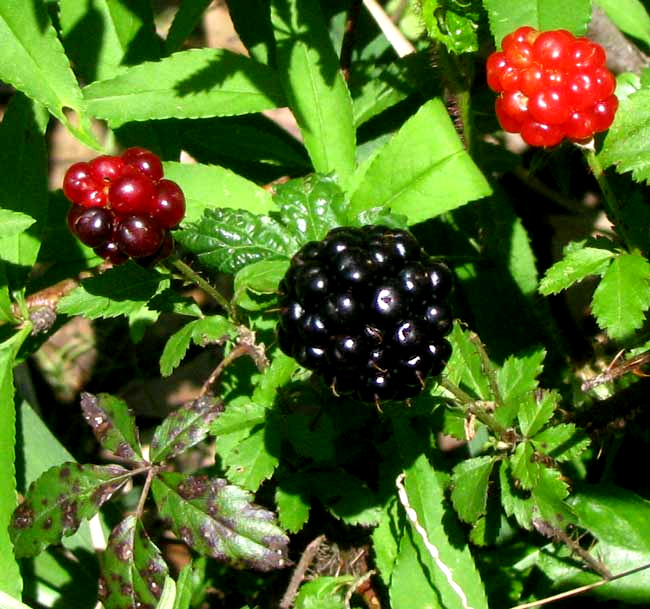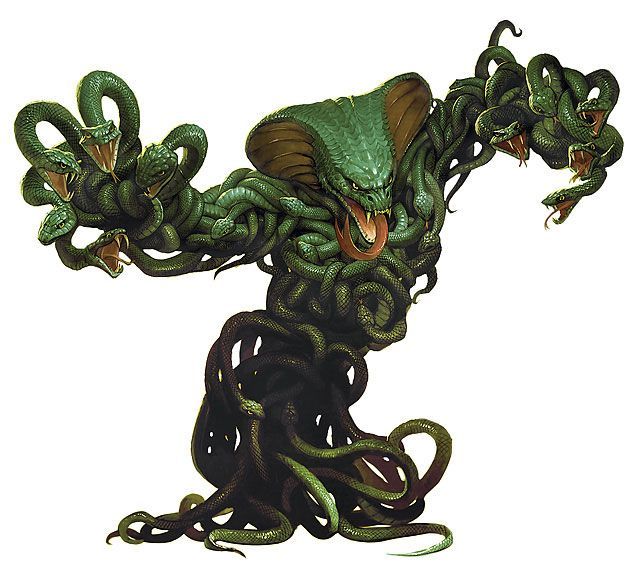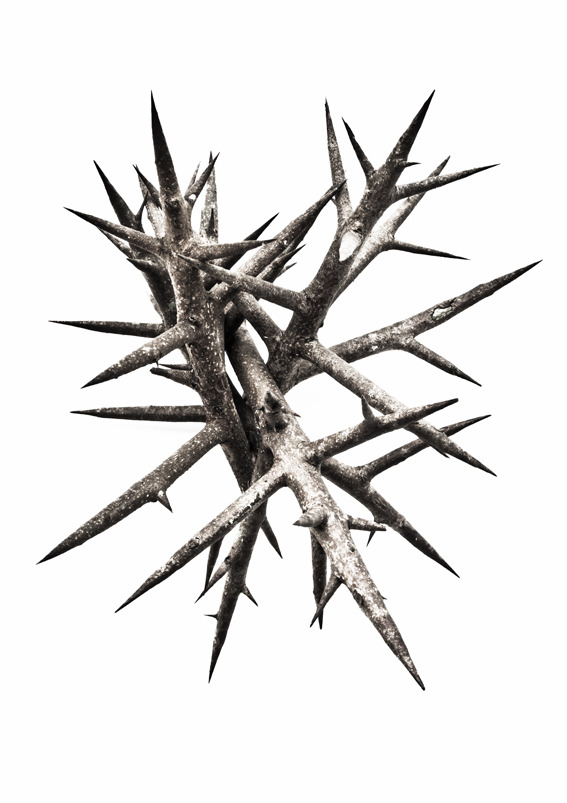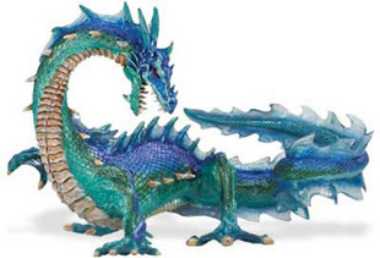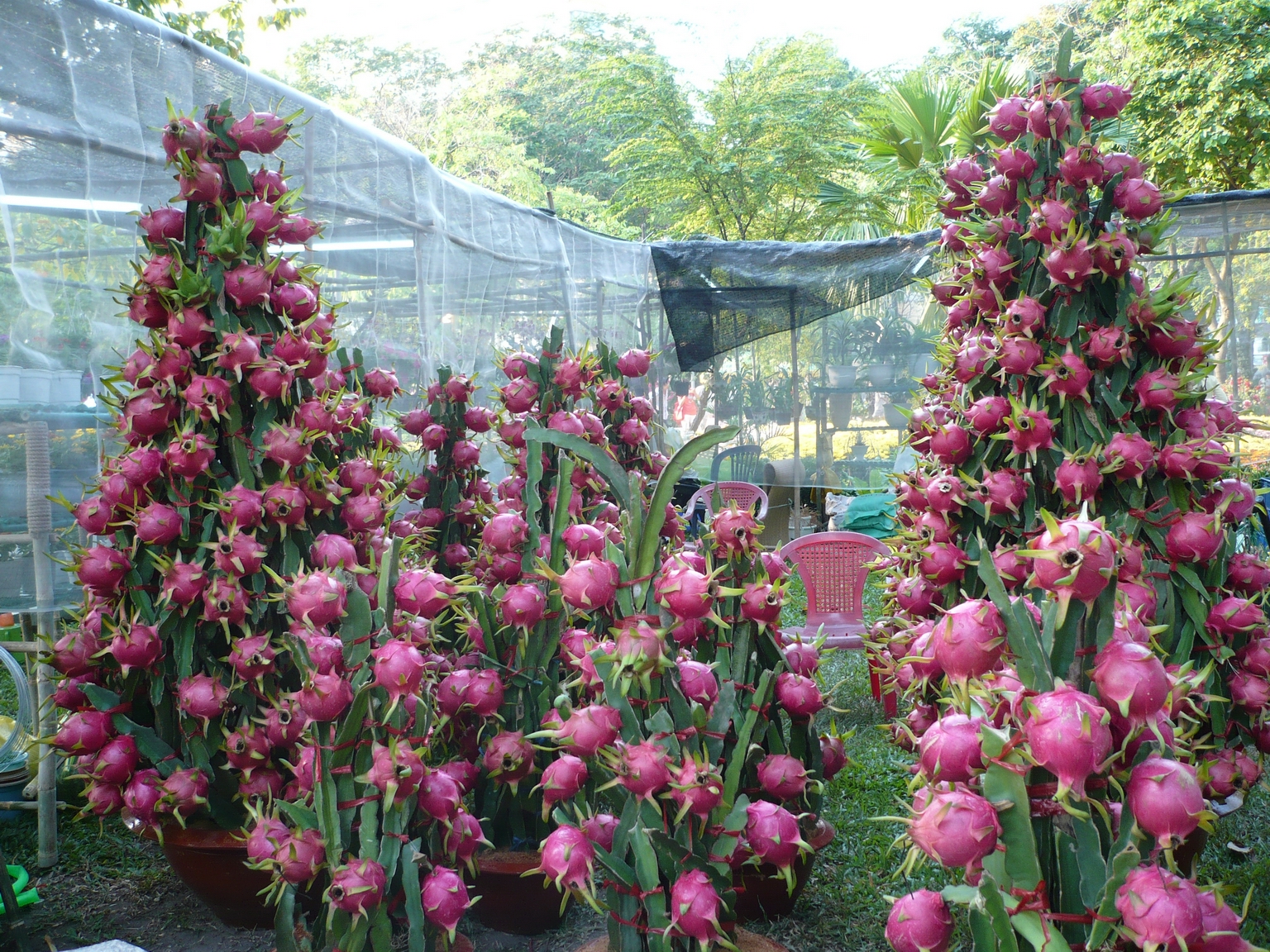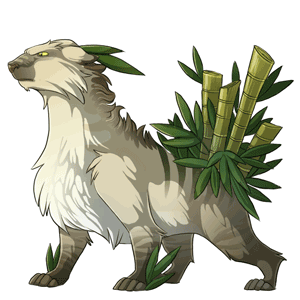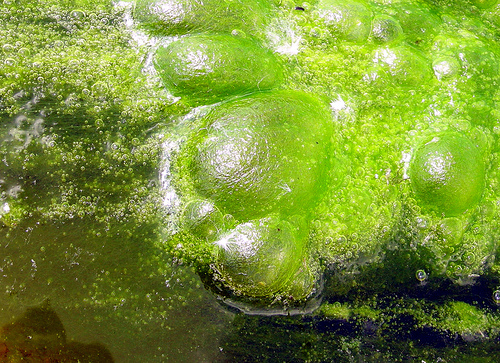Seeing the lack of such creatures, I thought I'd stat up a few, though they're generally geared more toward traditional fantasy than post apocalyptic settings.
Crimson Crow
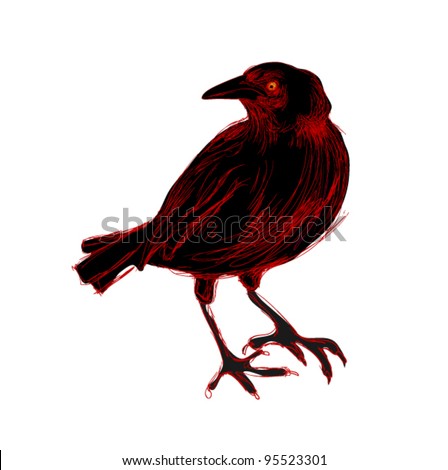
No. Enc.: 4d4 (4d4)
Alignment: Chaotic
Movement:
Fly: 270' (90')
Armor Class: 6
Hit Dice: 2+4
Attacks: 1 (eye peck or claw)
Damage: 1d2/1d4
Save: L1
Morale: 8
Hoard Class: VI
XP: 59
Crimson Crows are large, crows of a dark red color, typically 3 feet long with wingspans of about 5½ feet. They primarily feed on small animals, specifically rodents, rabbits and hares, small swine, various procyonids, and mustelids. They will also feed on the carcasses of any larger creatures that they encounter, though they rarely attack anything more than 1½ their size.
These disreputable creatures are known to serve powerful Chaotic aligned creatures as spies and informants, trading their services for meat and shiny gee-gaws which they hoard in their nests. While they have excellent vision, equal to an eagle's eyesight, they also have decent nightvision and ultraviolet vision. They are also able to communicate intelligently, with a vocabulary of several hundred words.
Mutations: Increased Vision, Bizarre Appearance
Night Raven

No. Enc.: 1d6 (2d4)
Alignment: Chaotic
Movement:
Fly: 180' (60')
Armor Class: 5
Hit Dice: 3+3
Attacks: 2 (2 claws or bite)
Damage: 1d6/1d6/2d4
Save: L2
Morale: 9
Hoard Class: II (x3)
XP: 205
These huge, sleek predators appear as dark blue-black crows about 6' long with wingspans of 10-12 feet. Night Ravens are evil and known to serve as scouts and spies for any Chaotic being that can meet their price, 30 pieces of silver per job, with very specific contractual requirements, communicated through Neural Telepathy.
As they are nearly man-sized, they are known to prey extensively on humanoids, though only those they outnumber at least three to one, or who appear weakened, diseased, wounded and unarmed and easy prey. Uninterested in corpses and other animals, they prefer only live prey.
While they have excellent Nightvision, they primarily hunt prey with their mental abilities; Empathy and Track Mind (Creatures of the Wasteland) to locate targets, and Neural Telepathy to extract information.
Mutations: Gigantism, Empathy, Track Mind (CotW), Neural Telepathy
Dire Corbie

No. Enc.: 1 (1d4)
Alignment: Chaotic
Movement:
Fly: 120' (40')
Armor Class: 4
Hit Dice: 4+2
Attacks: 3 (3 claws)
Damage: 2d4/2d4/2d5
Save: L3
Morale: 10
Hoard Class: XIX
XP: 245
Dire Corbies are immense, 8 foot long, three-legged crow-like creatures with a wingspan of 15-16 feet. While not quite large enough to be used as mounts by average-sized humanoids, they are occasionally known to carry small humanoids or creatures, though they will never act as steeds, instead, carrying the creature in their claws. These rare creatures will be found employed by only the most powerful Chaotic aligned villains, as the price of their service is often very high, typically multiple artifacts (magic items).
Thorough carnivores, they will attack just about any creature that they could possibly consume. Generally they attack by sinking all three claws into a victim in a swoop attack, and if they successfully connect, lifting the target into the air, to drop them from a considerable height.
Dire Corbies gather information with their powerful sight, increased range of vision, nightvision, ultraviolet vision, thermal vision, and 360 degree vision, allowing them to visually observe just about any target within miles of their location.
Mutations: Increased Sight, Thermal Vision, 360-Degree Vision (Creatures of the Wastes)
Spyder

No. Enc.: 1d8 (1)
Alignment: Chaotic
Movement: 120' (40')
Web: 120' (40')
Armor Class: 6
Hit Dice: 2+2
Attacks: 1 (bite)
Damage: 1d6, poison
Save: L1
Morale: 7
Hoard Class: VI
XP:
Spyders are a mutated breed of giant hunting spider with a single large eye that can transmit its images to a selected recipient. Generally, dark grey to black in color, these 1' long spiders are hairy and of a fairly placid disposition. Unlike many other types of spiders, Spyders do not spin webs, although they can negotiate webbing, vertical surfaces, and even cling to ceilings.
While primarily passive observers, Spyders can attack humanoids, usually by leaping at their target to bite. They can leap up to 40', allowing them to cross large gaps, attack prey, or flee. Their venom contains a Class 12 poison.
When not being actively used to spy for their masters, they lair in large, dark caves and ruins, avoiding light, though they are not nocturnal or even light-blind.
Mutations: Gigantism, Increased Vision, Reverse Clairvoyance (NEW)
Eye Bat
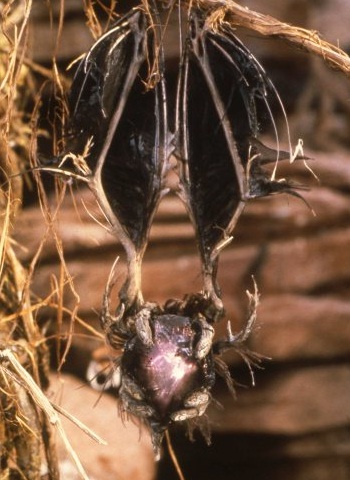
No. Enc.: 1d6 (3d6)
Alignment: Chaotic
Movement:
Fly: 240' (80')
Armor Class: 7
Hit Dice: 2
Attacks: 2 (2 claws)
Damage: 1d2/1d2
Save: L1
Morale: 7
Hoard Class: None
XP: 47
Eye Bats are large grey-brown, bat-like creatures with a wingspan of 4-6 feet, and a large, single eye in place of a head. Employed by intelligent Chaotic beings of all stripes, they are used as ocular scouts to find targets for their masters. Generally unintelligent, they must be telepathically guided to their target(s). Oddly, since they have no known mouthparts, it is unknown what they consume, or even if they eat at all.
Their masters rarely use Eye Bats for combat, attacking only as a last resort (although a few villains are known to habitually sacrifice Eye Bats as one-shot kamikaze weapons against their foes).
It is not known how Eye Bats are produced (or reproduce, if they do so), however, with their acute vision and mental capabilities, they do make excellent spies.
Mutations: Bizarre Appearance, Reverse Clairvoyance (NEW), Mental Slave Bond (NEW)
Wyrmpire

No. Enc.: 2d4 (2d4)
Alignment: Chaotic
Movement: 60' (20')
Fly: 180' (60')
Armor Class: 5
Hit Dice: 3
Attacks: 3 (2 claws, bite)
Damage: 1d4/1d4/1d6
Save: L1
Morale: 9
Hoard Class: None
XP: 95
Wyrmpires are flying bird-lizard creatures with grey skin and black wings. Though small (about 2 feet long with a wingspan of 3 feet), they can be fairly dangerous, as they are known to be blood drinkers. Somewhat intelligent, these creatures are sometimes employed by Chaotic masters as spies and scouts. However, they have only a limited ability to communicate, generally a vocabulary of 100 or so words.
These creatures will attack just about any mammal, humanoid or otherwise, but only if the creature is small enough to physically overpower, or somehow restrained, incapacitated, paralyzed, asleep, or otherwise immobile. When attacking a target, they prefer to grip with both claws and then physically biting their victim in order to drain blood (1d6 damage per round that they are in contact with the victim).
Mutations: Bizarre Appearance, Complete Wing Development, Dietary Requirement Change (Blood, see Creatures of the Tropical Wastes)
New Mutations
Reverse Clairvoyance (Beneficial Mental Mutation)
This mutant can transmit visual images to a selected recipient up to 100’ away, allowing the recipient to see as if they were standing on that spot.
Mental Slave Bond (Mental Drawback Mutation)
This power functions as if the mutant is under the effects of the Possession mutation, with some differences. Unlike Possession, the creature in control is not directly controlling the victim, but rather issuing mental commands which must be obeyed (Mental Combat with a -4 to WIL for a mutant with the Mental Slave Bond to resist the command). Neither is the controller directly receiving sensory information from the mental slave, instead they must concentrate to receive information and/or pass on mental commands. If the controller is concentrating on the linkage to the mental slave, and that mental slave is killed, the controller must save vs stun attacks or be rendered unconscious for 1d6 hours.





